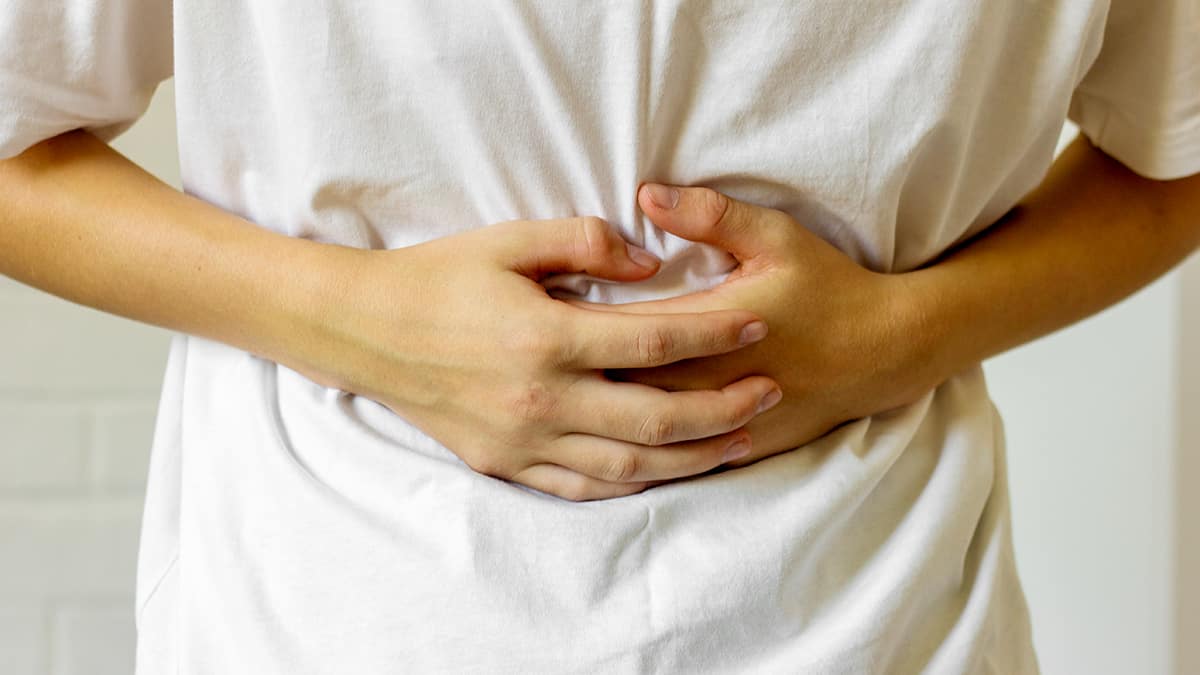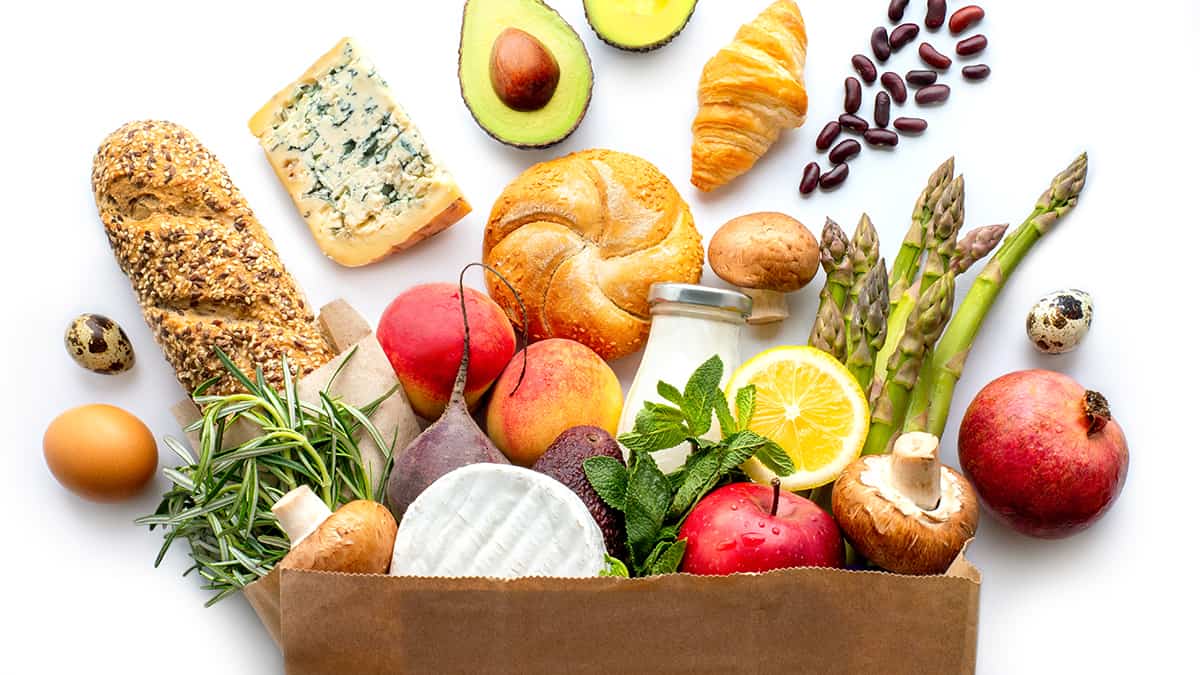What Is a Low-Residue Diet?
Gastrointestinal Health

A low-residue diet
A low-fiber/low-residue diet is a diet with the end goal of having fewer and smaller bowel movements each day and it may help calm symptoms of gastrointestinal illnesses or help prepare the body for certain medical procedures. People who follow a low-residue diet need to eat low-fiber foods that are easy to digest. If your physician tells you to go on a low-residue diet, ask for guidelines around what to eat and how long to stay on the diet.
What Is Food Residue?
The digestive system breaks down and uses most parts of the food we eat. However, there are some substances that can’t be digested. Anything that can’t be broken down and is left over in the large intestine after a meal is digested is called “residue.”
Residue is mostly made up of fiber. Dietary fiber is a substance made by plants. It is primarily present in plant-based foods like grains and produce. The body can’t break down fiber.
Most people need to eat a lot of fiber in order to maintain good health. Eating more fiber reduces a person’s risk of chronic disorders like diabetes, heart disease, and cancer. The Academy of Nutrition and Dietetics recommends a daily fiber intake of 25 grams for women and 38 grams for men. However, a person may occasionally need to eat smaller amounts of fiber for health reasons.
The Low-Residue Diet
The goal of a low-residue diet is to eat foods that can be easily broken down by the body and will lead to less residue left over in the digestive system. This diet typically causes people to have smaller, less frequent bowel movements.
A low-residue diet is very similar to a low-fiber diet, but they may not be exactly the same. Low-residue diets do focus on low-fiber foods, but they may also eliminate other types of foods as well. For example, dairy products do not contain much fiber, but still lead to a lot of residue, so these foods may also be avoided. This is important to note if you are following a low-residue diet for the purposes of bowel preparation, dietary or other health reasons.
When Do You Need To Use a Low-Residue Diet?

There are two main reasons why physicians recommend low-residue diets. The first is for diagnostic purposes, to prepare the digestive system before undergoing a test or surgery. The other is as a treatment for different digestive illnesses.
Don’t begin a low-residue diet unless your healthcare provider tells you that you should. Low-residue diets typically don’t provide enough nutrients to keep you healthy long-term, so follow your physician’s instructions regarding when to begin and end this eating plan. Additionally, you may want to ask your physician if it’s a good idea to take any vitamins or supplements while you are following the low-residue diet.
The Low-Residue Diet as Bowel Preparation
Some people need to follow a low-residue diet before going through medical procedures. One such procedure is a colonoscopy. During this test, a physician uses a thin tube with a camera on the end to look inside the large intestine. Colonoscopies are used to diagnose certain illnesses and digestive problems. Colonoscopies are also an important part of screening for colon cancer. People with an average risk of developing this cancer should begin getting screened at the age of 45.
Before a colonoscopy, a person needs to clean out their bowel. Traditionally, many physicians recommended a bowel prep that involved taking laxatives and consuming only clear liquids for one or more days before the procedure. However, in recent years many researchers have conducted clinical trials looking at other bowel prep methods. Several studies have found that people who ate a low-residue diet before undergoing procedures had equal or better colon cleansing compared to people who followed a clear liquid diet. Additionally, people following a low-residue diet preferred this method and were more likely to stick to the instructions.
Physicians may also recommend following a low-residue diet before other intestinal tests. By eliminating leftover residue from the large intestine, this diet can help the physicians see the intestine more clearly and more accurately identify any problems.
Using the Low-Residue Diet as Treatment
Eating low-residue foods may help manage symptoms of conditions that affect the digestive system. Physicians may recommend following this eating plan to people who are dealing with:
- Inflammatory bowel disease
- Diverticulitis
- Irritable bowel syndrome
- A bowel obstruction (a condition in which digested food is blocking the intestines)
- Other conditions, such as infection or cancer of the digestive system
- Surgery of the intestines
There are two different disorders that fall under the umbrella of inflammatory bowel disease (IBD): ulcerative colitis and Crohn’s disease. In both of these conditions, there is ongoing inflammation in the small or large intestine. Over time, this inflammation causes damage and leads to symptoms like abdominal pain, diarrhea, constipation, blood in the stool, weight loss, and tiredness. However, these symptoms don’t occur all of the time. They occur or get worse during disease “flares.” Low-residue diets may help reduce the amount of stool, allowing the intestines rest and leading to fewer IBD symptoms during these flares.
Diverticulitis is a condition in which small bulges or pouches form in the intestines, and then -- these outpouchings -- become inflamed. One study has found that eating foods that are easier on the digestive system, including low-fiber foods, may help reduce symptoms.
Irritable bowel syndrome (IBS) is a disorder without a clear cause that leads to several digestive symptoms, including bloating, cramping, constipation, and diarrhea. In the past, most physicians have recommended that people with IBS try eating more fiber. Unfortunately, this can sometimes make symptoms more severe. Now, researchers are finding that a low-fiber diet can lessen symptoms or make them disappear altogether.
A low-residue or low-fiber diet may also be necessary before surgery — either surgery on the intestines or gynecological surgery. Following a low-residue diet before these surgeries can help create more room in the abdomen and reduce risk of infection. Additionally, switching to a low-residue diet after intestinal surgery can help people’s intestines begin working again more quickly, leading to a shorter amount of time spent in the hospital.
How Does a Low-Residue Diet Work?

It is hard to measure exactly how much residue each type of food produces. Additionally, each person’s body may respond to foods differently. Researchers have not always been able to come up with a clear definition for which foods qualify as “low-residue.” For this reason, some physicians now recommend that people who need to follow a low-residue diet simply try to follow a low-fiber diet.
When it comes to a low-fiber diet, physicians often suggest eating 10 grams of fiber or less per day. If your physician wants you to follow a low-residue diet, they may also tell you to avoid other foods that may be hard to digest or cause digestive symptoms.
Learning about which foods naturally contain fiber can help. Check the nutrition facts label on your foods. This will tell you how much of that food makes up one serving and how much fiber is in each serving. If a food item like a fruit or vegetable doesn’t come with a label, you can look up the amount of fiber per serving online. Keep track of how much fiber you’re eating throughout the day, and try not to eat more than 10 grams, or follow your physician’s instructions for how much fiber you should be eating.
Your physician will tell you how long to remain on a low-residue diet. If you just need to go through bowel prep for an upcoming procedure, you may only need to follow the diet for one or a couple of days. If you are trying to use a low-residue diet to help with disease symptoms, your physician may advise staying on the diet for several weeks or months.
People who need to follow a low-residue diet long-term may want to consult with a Registered Dietician (RD) or Certified Nutrition Specialist (CNS). These health professionals can help ensure that you are eating balanced meals and getting good nutrition while limiting the foods that you eat.
What Foods Can I Eat on a Low-Residue Diet?
During a low-residue diet, you’ll want to focus on low-fiber foods. This list of foods provides a good starting point for what you may be able to eat. However, each person digests food differently, so your physician may tell you to avoid foods that are on this list. Always follow your physician’s recommendations.
Usually, the foods on this list have low levels of fiber. However, it is still important to check the nutrition facts label for everything that you eat. Some naturally low-fiber foods have extra fiber added in.
When it comes to grains, white or refined products have less fiber than whole-wheat and whole-grain products. Stick to:
- White bread
- White pasta
- White rice
- Non-whole-wheat crackers
- Cereal without added fiber.
Most cooked, tenderized meats are okay to have on a low-residue diet. You can also have poultry and eggs. For plant-based options, you can try tofu and smooth peanut butter.
Most fruits and vegetables should not be eaten raw. Cooking produce, removing skins and seeds, and avoiding pulp helps you cut back on fiber and residue. Vegetables that can be eaten raw include small amounts of zucchini, cucumbers, or lettuce. Make sure to peel and remove seeds first. You can also have cooked, canned, or juiced versions of the following vegetables:
- Spinach
- Green beans and wax beans
- Asparagus
- Eggplant
- Squash and pumpkin
- Potatoes with the skins removed
- Carrots
- Beets
When it comes to fruits, juices are always a good option — but make sure to buy pulp-free! Sauces and purees like applesauce are also good bets. Raw melon, cantaloupe, bananas, apricots, nectarines, peaches, and plums are usually okay to have on a low-residue diet. If you’re eating raw fruit, make sure it’s very ripe. You can also have canned fruits as long as they don’t come in heavy syrup.
Make sure to drink plenty of fluids while on a low-residue diet. This can help prevent constipation, which is common when eating low-fiber foods.
What Foods Should I Avoid on a Low-Residue Diet?
Avoid whole-grain and whole-wheat foods, which contain a lot of fiber. Additionally, stay away from:
- Brown rice and wild rice
- Popcorn
- Oats and oatmeal
- Granola
- Wheat germ
- Bran
- Grains like barley, quinoa, and bulgur
When it comes to meats, stay away from processed meats like hot dogs and sausage, and say no to any deli meats. You should also avoid nuts and crunchy peanut butter, beans, and tempeh, as these are all high-fiber foods.
Avoid any vegetables that aren’t on the above lists. Additionally, stay away from any vegetables that haven’t been de-seeded or peeled. When it comes to fruit, you should avoid all dried fruits, as these typically contain a lot of fiber. You should also choose not to eat any pineapple, berries, figs, and prunes.
Ask your physician whether it is okay to eat dairy products. Some low-residue diet recommendations include limiting or avoiding milk, yogurt, and cheese. These products contain low amounts of fiber but may worsen digestive symptoms and increase the amount of stool that you produce.
How To Reintroduce High-Fiber Foods

You’ve completed the low-residue diet, and your physician says that you no longer need to follow this eating plan. Now what?
If you have only been eating low-fiber foods for a day or two, it may be fine to eat a normal amount of fiber again the next day. Ask your physician for recommendations.
If you have been following a low-residue diet for a longer time period, don’t go back to your usual diet immediately. It will be difficult for your digestive system to handle. Instead, increase the amount of fiber you eat gradually over time. Try eating a small amount of a high-fiber food for a couple of days in a row. If you don’t experience any symptoms, add this food back into your diet.
Some experts recommend adding 5 more grams of fiber to your diet each week. For example, if you have been eating 10 grams of fiber each day, try eating 15 grams of fiber per day the following week, and 20 grams per day the week after that. If you begin to experience digestive symptoms like bloating, cramping, or diarrhea, try decreasing your fiber intake again until the symptoms resolve.
Conclusions
A low-residue diet is similar to a low-fiber diet. In some cases, they may be the same. These diets may be a necessary tool when preparing for certain medical procedures. They can also be a helpful way of managing symptoms for people with digestive diseases. However, people should not usually stay on low-residue diets for long time periods, because fiber helps keep you healthy and prevent chronic illnesses. Follow your physician’s instructions when it comes to beginning and ending a low-residue diet, and heed their recommendations about what to eat and avoid.